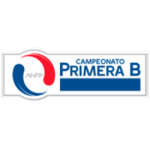| Coach | NA |
| Venue | Estadio Regional Calvo y Bascuñán |
Antofagasta Trivia
Antofagasta predictions
Predictions for Antofagasta: See upcoming and historic predictions for Antofagasta below.
Disclaimer: Past performance does not guarantee future results. Betting involves risk; only wager what you can afford to lose. Always gamble responsibly.
Antofagasta Opinions
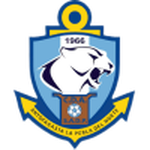 Who is the greatest player in the history of Antofagasta?
Who is the greatest player in the history of Antofagasta?
Antofagasta latest results
| 13/04 | - | ||
| 07/04 | 4 - 1 | ||
| 31/03 | 2 - 2 | ||
| 24/03 | 2 - 1 | ||
| 16/03 | 1 - 0 |
Antofagasta latest transfers
| Date | Player | From | To | Price |
|---|---|---|---|---|
| 2018-01-01 | Á. Araos | Antofagasta | Universidad de Chile | € 599K |
| 2016-07-01 | M. Bolados | Antofagasta | Colo Colo | € 437.8K |
| 2014-07-01 | E. Pulgar | Antofagasta | U. Catolica | € 350.1K |
Primera B standings
| Rank | Team | MP | W | D | L | GF | GA | GD | Pts |
|---|---|---|---|---|---|---|---|---|---|
| 1 |
 D. La Serena
D. La Serena
|
7 | 5 | 1 | 1 | 10 | 5 | 5 | 16 |
| 2 |
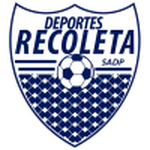 Recoleta
Recoleta
|
6 | 5 | 0 | 1 | 11 | 5 | 6 | 15 |
| 3 |
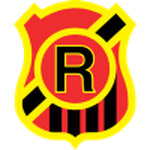 Rangers de Talca
Rangers de Talca
|
7 | 5 | 0 | 2 | 11 | 6 | 5 | 15 |
| 4 |
 Deportes Limache
Deportes Limache
|
6 | 4 | 0 | 2 | 13 | 6 | 7 | 12 |
| 5 |
 Barnechea
Barnechea
|
6 | 3 | 2 | 1 | 10 | 7 | 3 | 11 |
| 6 |
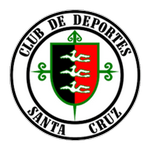 Deportes Santa Cruz
Deportes Santa Cruz
|
6 | 3 | 1 | 2 | 10 | 10 | 0 | 10 |
| 7 |
 Magallanes
Magallanes
|
6 | 3 | 0 | 3 | 9 | 8 | 1 | 9 |
| 8 |
 Santiago Wanderers
Santiago Wanderers
|
7 | 3 | 0 | 4 | 10 | 12 | -2 | 9 |
| 9 |
 Antofagasta
Antofagasta
|
6 | 2 | 1 | 3 | 7 | 9 | -2 | 7 |
| 10 |
 San Luis
San Luis
|
5 | 2 | 1 | 2 | 9 | 14 | -5 | 7 |
| 11 |
 Santiago Morning
Santiago Morning
|
5 | 2 | 0 | 3 | 10 | 9 | 1 | 6 |
| 12 |
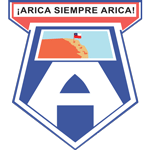 San Marcos de Arica
San Marcos de Arica
|
6 | 2 | 0 | 4 | 9 | 9 | 0 | 6 |
| 13 |
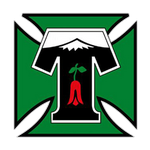 Deportes Temuco
Deportes Temuco
|
6 | 2 | 0 | 4 | 6 | 9 | -3 | 6 |
| 14 |
 Curico Unido
Curico Unido
|
7 | 2 | 0 | 5 | 7 | 12 | -5 | 6 |
| 15 |
 Universidad de Concepcion
Universidad de Concepcion
|
6 | 2 | 0 | 4 | 4 | 10 | -6 | 6 |
| 16 |
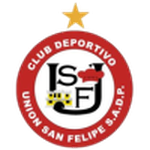 Union San Felipe
Union San Felipe
|
6 | 1 | 0 | 5 | 6 | 11 | -5 | 3 |
About Antofagasta
Club de Deportes Antofagasta, commonly known as Antofagasta, is a professional football club based in Antofagasta, Chile. Established in 1966, the club has a rich history and is one of the most recognized football teams in the country.
Antofagasta's journey began in the second division of Chilean football, where they quickly made a name for themselves with their aggressive style of play and strong team spirit. Their hard work paid off when they earned promotion to the Primera División, the top tier of Chilean football, in 1968.
The club's colors are blue and white, symbolizing the sea and the purity of the city, respectively. Their home games are played at the Estadio Regional de Antofagasta, a stadium with a capacity of over 21,000 spectators. The club's mascot, a puma, is a nod to the wildlife found in the surrounding Antofagasta region.
Over the years, Antofagasta has produced several notable players who have gone on to represent the Chilean national team. Despite facing financial difficulties and relegation battles, the club has always bounced back, demonstrating resilience and a never-give-up attitude.
Antofagasta's most successful period came in the 2010s when they consistently finished in the top half of the Primera División. Their best finish came in the 2018 season when they finished in 2nd place, their highest ever in the league. They also reached the semi-finals of the Copa Chile in 2014, another significant achievement in the club's history.
While Antofagasta has yet to win the Primera División or the Copa Chile, they remain a competitive force in Chilean football. Their passionate fan base, known as 'Los Pumas', is renowned for their unwavering support and loyalty.
The club is also committed to youth development, with a strong academy system that nurtures young talent. Many of these young players have gone on to have successful careers, both domestically and internationally.
In recent years, Antofagasta has also made strides off the pitch. They have been involved in various community initiatives, using football as a tool to bring about positive change in the Antofagasta region.
In conclusion, Club de Deportes Antofagasta is more than just a football club. It is a symbol of the city of Antofagasta, representing its people's spirit, passion, and resilience. Despite the ups and downs, the club continues to strive for success, embodying the motto 'Never give up'.














